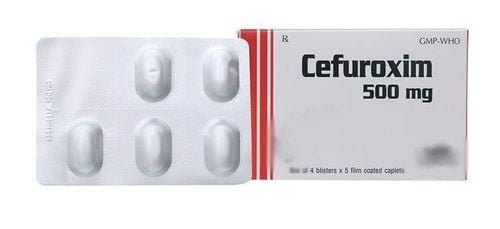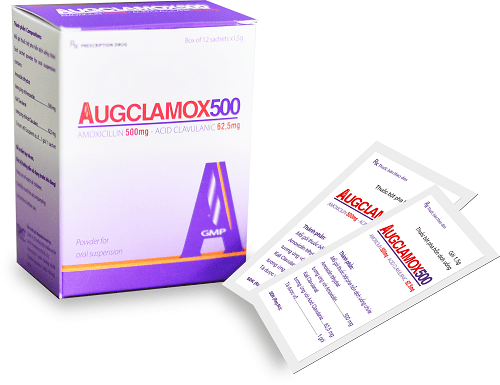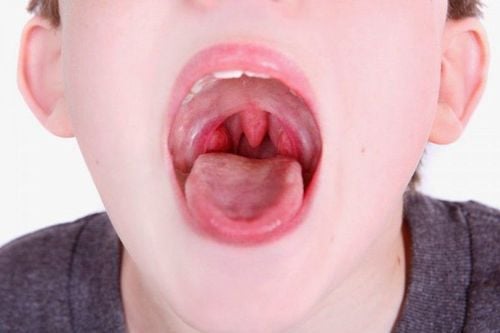This is an automatically translated article.
The article was professionally consulted by MSc Dang Thi Thuy Trang - Ear, Nose and Throat specialist, Vinmec Central Park International General Hospital.After a tonsillectomy, careful care is needed to promote wound healing in the throat, reducing pain and the risk of bleeding. Here are the follow-up instructions after tonsillectomy.
1. Diet
After tonsillectomy, pain will make you limited in eating. However, you need to drink enough water. This will promote healing, reduce the risk of bleeding, and prevent dehydration.
Besides, you need to follow a liquid or soft diet for a few days after tonsillectomy. Eat soup, flour, pureed porridge and drink milk and water, divided into many small meals often throughout the day. Do not drink orange or grapefruit juice as well as fruit juices, as the acid in them can hurt your throat.
After a few days, the pain subsides, you can slowly switch to eating more solid foods. Soft foods such as ice cream, yogurt, pudding, etc. are suitable suggestions if you want to replace porridge or pureed rice. Avoid hot, spicy or hard foods with sharp edges, such as french fries, which can injure the tonsils.
2. Physical activities
After tonsillectomy, most patients should rest in their room for a day or two and can begin light exercise after three or four days if they feel completely comfortable. Any vigorous, heavy physical activity immediately after surgery is not recommended because of the risk of damaging wound healing. In some cases requiring invasive intervention during tonsillectomy, a lot of blood loss can take two to three weeks to fully recover.
During this time, you should rest at home, limit crowded places and avoid contact with people who have a cold, sore throat or flu. Rooms should use air conditioning to help moisten and soothe your throat.

Sau phẫu thuật cắt amidan, hầu hết bệnh nhân nên được nghỉ ngơi trong phòng một hoặc hai ngày
3. The problem of pain relief
During the first few days after surgery, sometimes up to 10 days, a strong, persistent pain in the throat is inevitable. This condition can be relieved by using common pain relievers such as paracetamol. However, avoid taking medications containing aspirin, ibuprofen, or other anti-inflammatory drugs for at least the first two weeks, as there is a risk of bleeding.
If you have pain while eating or sleeping, take a pain reliever first to help it work quickly, making you more comfortable.
In addition, you can also apply an ice pack to the neck area, this has noticed a significant effect. To do this, you should put ice cubes taken from the refrigerator in a sealed plastic bag, wrap an absorbent towel outside and gently place the ice pack on the front of your throat.
4. Fever
After surgery, mild fever, below 38 degrees Celsius is common and can be resolved with paracetamol. At the same time, the patient should rest in bed, limit exercise and pay attention to drinking enough water.
However, if the fever persists for more than two days or if the fever gets higher and the fever does not go down, suspect an infection and seek medical attention soon.

Sau mổ, tình trạng sốt nhẹ, dưới 38 độ C thường gặp và có thể giải quyết với paracetamol
5. Bleeding problems
Bleeding after surgery is not uncommon and it can persist for up to two weeks afterward. Most of the time it's just a very small amount of bleeding and even you can only detect this when you see a little bit of blood on the tongue.
Conversely, if you bleed heavily or have spitting, coughing or vomiting blood, or bleeding that doesn't stop, go to the emergency room immediately.
To prevent bleeding after tonsillectomy, it is necessary to pay attention to the type of food, avoid drinking liquids or eating hot, spicy or sharp foods to avoid injury when chewing or swallowing. Do not smoke or go to areas with smoke, irritating odors ... because it can make you irritated, create a reflex to cough, spit, and bleed more.
Gently brush your teeth and rinse your mouth as directed by your doctor before leaving the hospital. Avoid using very hot water when bathing or washing your face. Try not to cough, sneeze, or blow your nose. Tell your doctor if you have a cold or allergies for help.
6. Time to come back for a check-up
Return to the emergency room as soon as possible if you have the following signs:
A stiff, painful sore throat that doesn't get better with common pain relievers; bright red bleeding from the nose or mouth or bleeding that suddenly gets worse; Feeling tired, dizzy, or possibly fainting when sitting or standing; Unable to eat or drink anything through the mouth; There is pus or blood running down the throat; Change the voice; Stiffness and pain spreading to the face and neck; Increasing difficulty breathing and swallowing; High fever or prolonged fever. In summary, tonsillectomy is a surgery that has a great impact on the health of the whole body. After the intervention, the patient must be closely monitored to ensure the success of the surgery.
The choice of surgical method is also very important and greatly affects the patient's ability to recover. At Vinmec Central Park International General Hospital, the technique of tonsillectomy and VA curettage by Coblator is applied. The advantages of this technique are fast surgery time, no blood loss, good hemostasis, less postoperative burns, no swelling, and gentle postoperative process. With Coblator, the patient is much less painful than traditional surgery and surgery with unipolar or bipolar electrocautery, can recover quickly after 4-5 days of treatment.
Please dial HOTLINE for more information or register for an appointment HERE. Download MyVinmec app to make appointments faster and to manage your bookings easily.













